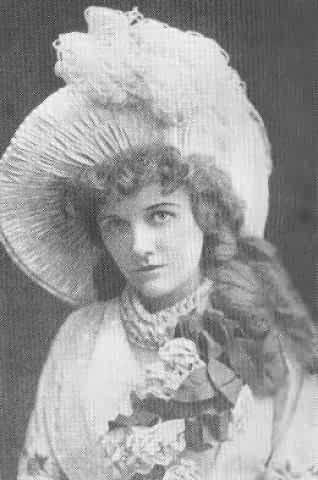|
|
|
 |
On March 3rd 1880 Gilbert and Sullivan left New York aboard the "Gallia" for Liverpool. Their immediate priority on returning to London was to rehearse their new opera, "The Pirates of Penzance", with the Opera Comique Company. They also had to appoint a new principal soprano.
It is reported that a chance suggestion by a friend persuaded Marion Hood to go to the Opera Comique in the hope of finding work as a singer. There she was introduced to Gilbert, who arranged for her to be auditioned. She sang the "shadow song" from Meyerbeer's "Dinorali". Gilbert was delighted; he had found just the person he wanted for the part of Mabel in the first London production of Pirates.
So began Marion Hood's brief but distinguished career with D'Oyly Carte. It was her first major engagement. The musical career of Marion Isaac, as she was known earlier, had begun in music halls in Hull. She married a music hall proprietor there, a Mr. Hunt of the Alhambra Palace Music Hall. She subsequently studied singing at the Royal Academy of Music, and it was from there that she went on to join D'Oyly Carte. According to Rutland Barrington she was "a perfect picture to look at and equally pleasant to listen to ... tall, slight, and graceful, a typical English girl with a wealth of fair hair, which I believe was all her own. Her singing of the waltz song, "Poor Wandering One", was quite one of the features of the first act
But she was not to stay long with D'Oyly Carte. In 1881 she was at the Olympic Theatre in Solomon's "Claude Duval" with George Power who partnered her as Frederic at the Opera Comique. This was followed by a tour with English opera and a season (1883-1884) at the Alhambra, Leicester Square, with Clay's "Golden Ring" and Millocker's "Beggar Student". But her next major engagement was to bring her more lasting fame. In 1885 John Hollingshead invited her to join his company at the Gaiety, and in the following year, when the theatre was under the management of George Edwardes, she sang the title role in Cellier's "Dorothy".
Dorothy was to become immensely successful - even rivalling "The Mikado" in popularity - but its success was not achieved at the Gaiety. The Gaiety was the home of burlesque, not musical comedy, and Marion Hood's career there continued with principal roles in burlesques until 1891. One of her last appearances in London was in 1898 in a benefit performance of "Trial by Jury" for Nellie Farren, one of the most famous long-serving members of the Gaiety company until a crippling spinal disorder cut short her career. After retiring from the stage Marion Hood settled in Liverpool with her second husband, a Mr. Hesseltine. She died in August 1912 at the age of fifty-nine.
The qualities that made Marion Hood a favourite of many are perhaps difficult to define. She was not a particularly great singer, but (and in this the critics of the time were unanimous) she did have a measure of charm and grace, the ability to be effective without effort, which lent her performances an air of refinement rarely seen on the burlesque stage. But behind the charm there was a very forceful personality. When George Edwardes arranged an Australian tour for his company he offered her a salary of £100 a week. She wanted £200. Edwardes pointed out that they would also be touring India, where the Rajahs would customarily give rubies and pearls to their stage favourites. She said she would consider the offer, and on the following day she wrote to him: "Dear Mr. Edwardes, If you accept my terms, you can have the Rajah's rubies."
Paul Seeley
| Artist Index | Main Index |